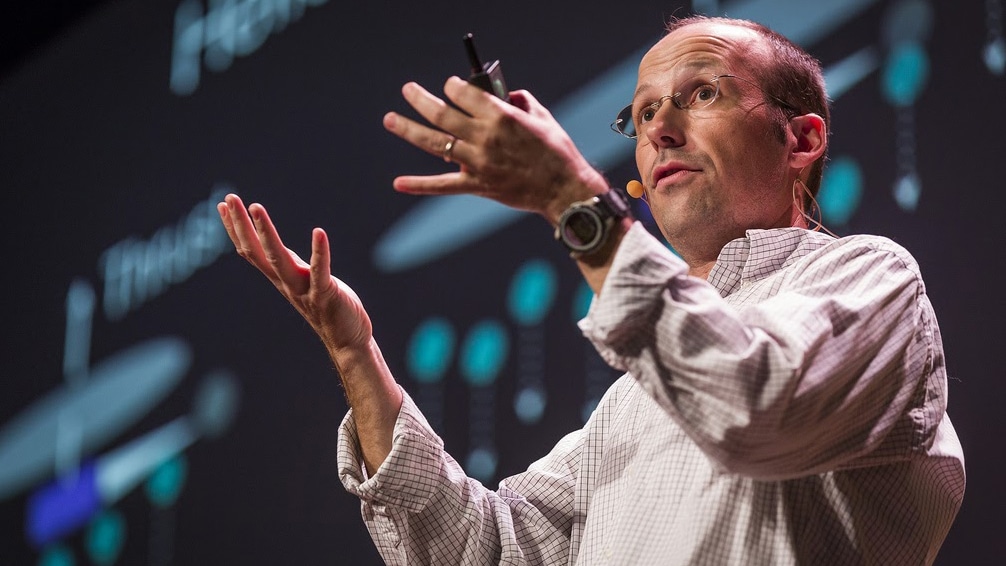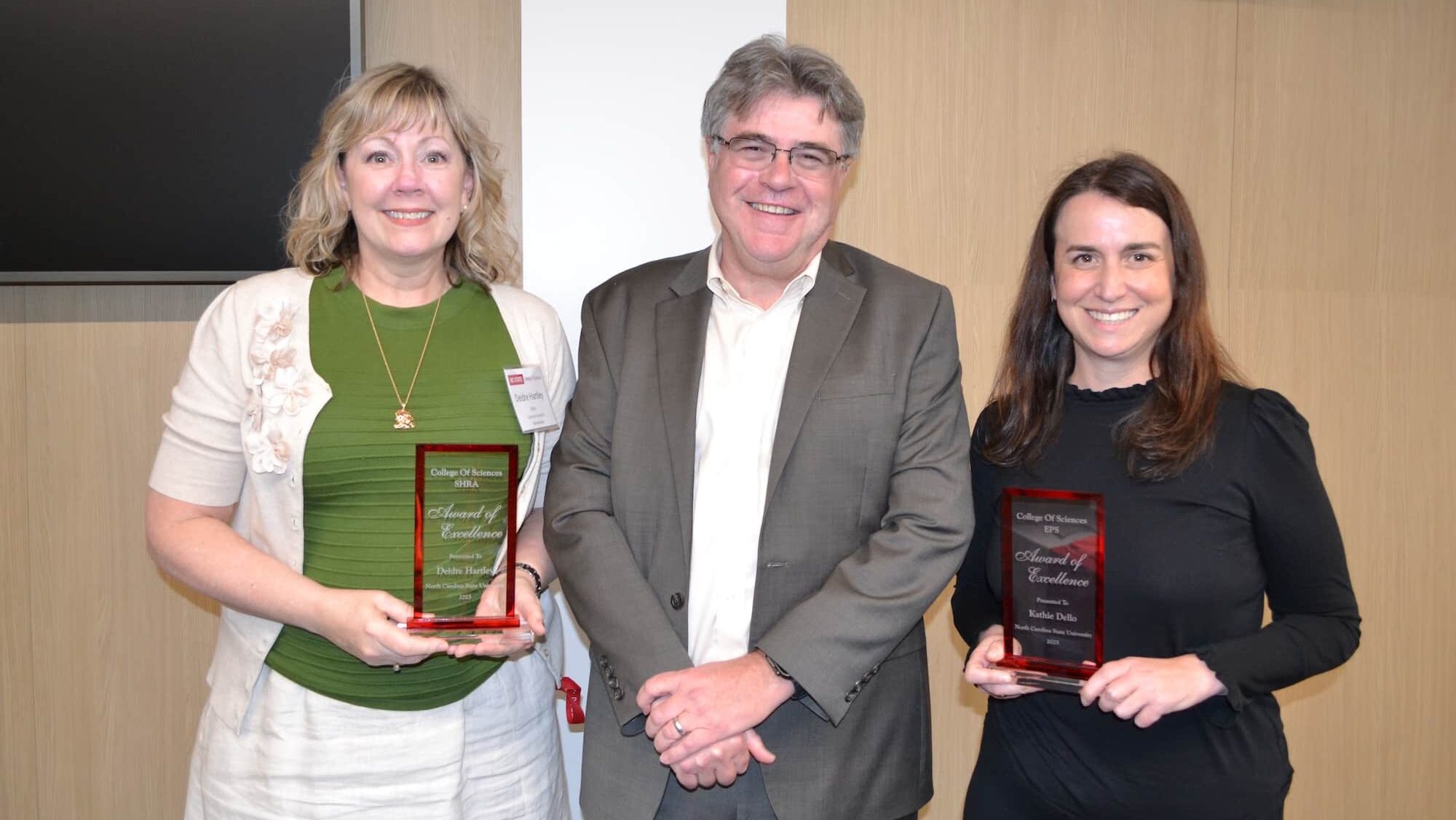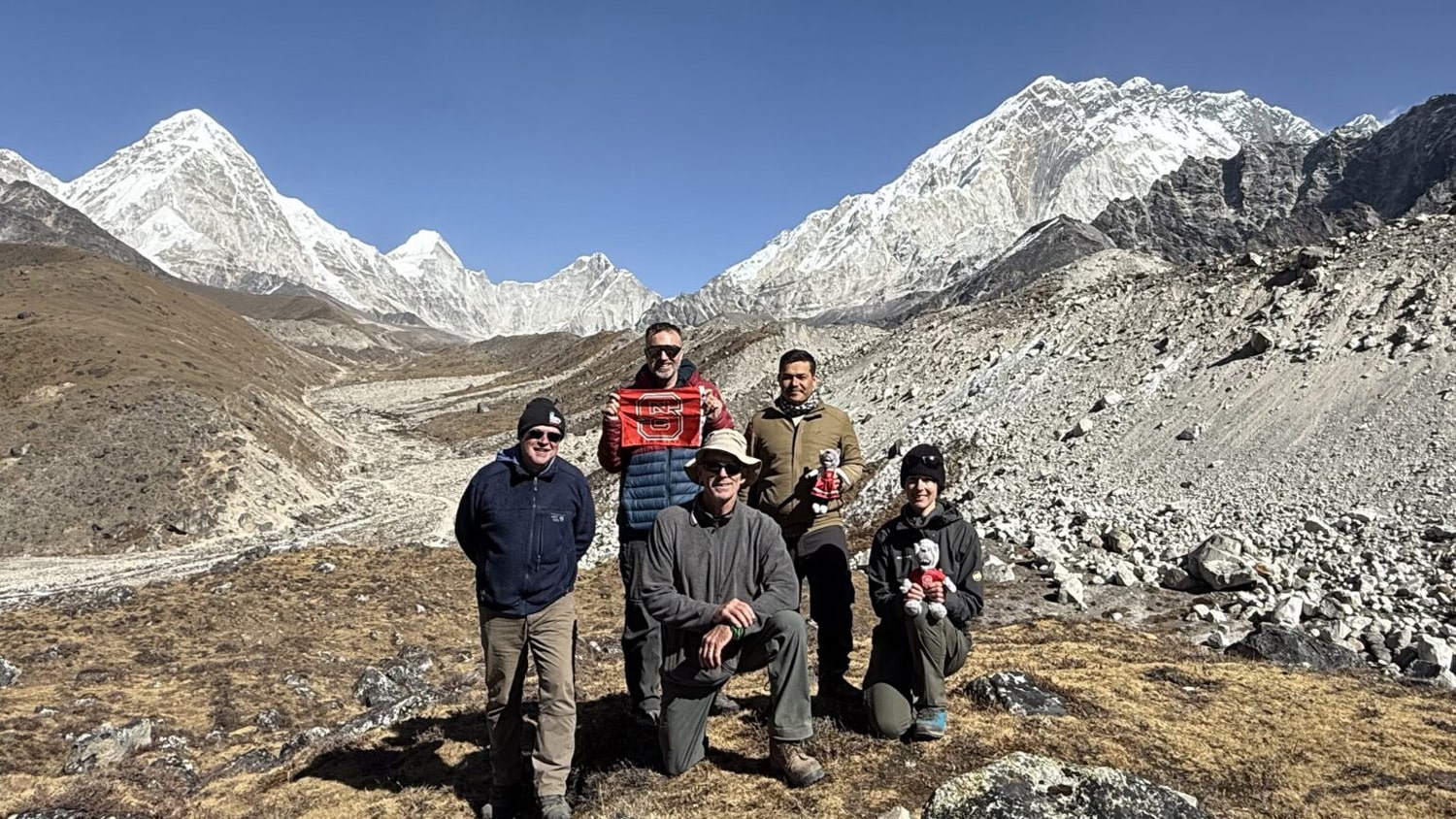More Sharing Is Better Sharing: A Q&A With Alum and WIRED Blogger Rhett Allain

Rhett Allain, who received his Ph.D. in physics from NC State in 2001, writes WIRED’s Dot Physics blog, where he breaks down the physics of fascinating conundrums, both real-life and fictional. Allain also serves as the technical consultant for the television show MacGyver and previously worked as the science adviser for Mythbusters. He is on the faculty at Southeastern Louisiana University, where he studies physics education.
Allain will be one of the featured speakers for the college’s State of the Sciences event on April 21. Physics and mathematics senior Jacob Lineberry recently talked with him about his roles as professor and science communicator. This interview has been edited and condensed.
Describe your experience at NC State and how it led you to to where you are now.
When I was at NC State, I was interested in physics education research and helping students understand physics. I already had some experience teaching as an instructor before I came to NC State, so I knew I was interested in teaching. Physics education research really helped me complement that educational aspect of physics. I think I got more experience in the classroom, and I got more experience with new ideas about how students learn.
How did you become a writer for WIRED?
I started writing the blog as a way to help students. They were trying to do these projects for class, and I wanted to give them some examples. I don’t know if they got much out of it, but I really enjoyed it. That was when I really started getting addicted to analyzing different things.
The intent wasn’t to be a science communicator. The intent was to do what I enjoy the most, which is physics. And I think, doing that over a long period of time, you start getting into different places.
At that time, there were science blogs that are now owned by National Geographic with 60 or 70 science bloggers, and in 2000 they asked if I wanted to move my blog over there. This gave me some more legitimacy because I was now a part of a group, rather than some random conspiracy theorist blogger on my own. In 2010, WIRED started a group of science blogs and invited me to be a blogger, and I’ve been there since.
[spotlight-box label=”Register Now” heading=”State of the Sciences” cta=”Register now” url=”https://sciences.ncsu.edu/event/state-of-the-sciences-live-at-the-library/”]Join us for our State of the Sciences: Live! at the Library event on April 21 to hear more from Allain and enjoy family-friendly science fun.[/spotlight-box]
What is your general approach to blogging?
My typical approach is, don’t do research. It’s like taking a Rubik’s cube and searching how to solve it. I don’t want to know. I want to solve it.
I always try to start from scratch. I want to start with fundamental ideas and see how far I can get without looking at what other people have done. That is my basic approach: Start with fundamental ideas, maybe do an experiment, maybe get some data to build my own model, and go from there. I want to build it myself.
What was one of your favorite stories you’ve written, and why was it interesting to you?
One of my favorites was this idea of a human-powered helicopter. There was this contest called the Sikorsky competition in which someone had to come up with a vehicle that was powered by a human, where you had to fly for three minutes at 20 feet high within certain boundaries. Essentially, it had to hover. And you see these videos of these huge contraptions and this guy working hard to pedal to power these four rotors to make it hover. That seems so hard. Why are they so big?
That’s the start of a calculation for me. I don’t start from aerodynamics principles, but from fundamental things, like taking air above and pushing it down and using momentum principles to calculate the thrust and then using work-energy to calculate the power.
If you take real helicopters, and you take the weight and the size of the rotors and calculate the power using my model and compare it to the listed power, they are really very close. Then you can take that and explore other ideas. That is one of my favorite stories, mainly because I started with fundamental ideas, and they ultimately agree with actual helicopter data.
What do you think is important about communicating science to the public, and what do you try to do when you communicate science?
Science is part of the human endeavor, so I try to encourage the idea that we are all scientists.
Part of the way I got into science communication was looking at how others communicate science. I found things that weren’t great. Here’s the thing that I think is really important: Let’s say you want to talk about energy. You can’t be 100 percent correct in a 30-second clip because it is complicated. But you could be 100 percent wrong. So my idea is to avoid the things that are just absolutely wrong.
Is there any advice or encouragement you try to give to your students to help them be more open in communicating their science?
More sharing is better sharing. I think a lot of people are afraid of writing things down because they aren’t perfect. I don’t write perfect stuff. That’s what I love about blogging. Blog posts are fresh and fast, and they aren’t perfect. And that is OK.
Anyone can blog. Anyone can write. Anyone can make a video. Just make stuff. It doesn’t have to be perfect. Just start making stuff and share it. The more you do it, the better you get.
- Categories:


